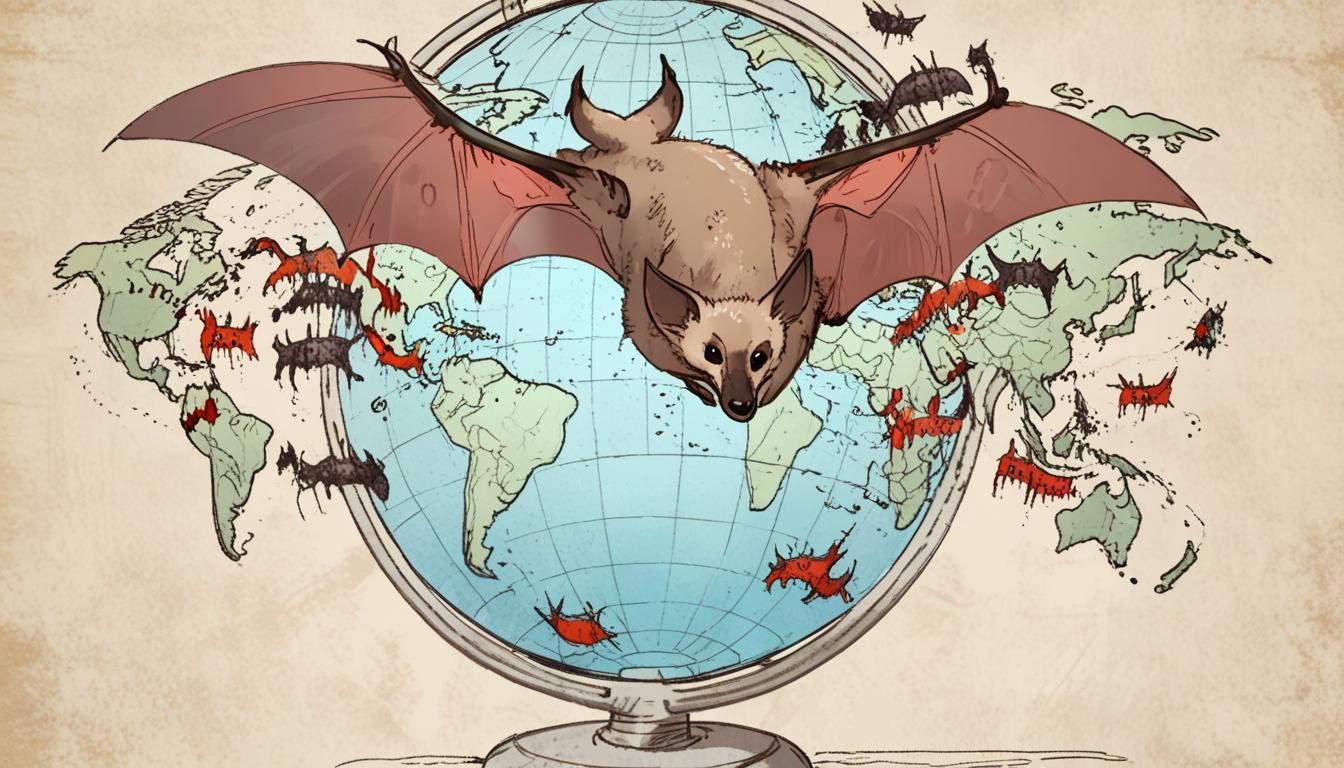New Research Sheds Light on the Origins of Covid-19, Suggesting a Broader geographical Context
Recent findings from researchers at the University of California, San Diego, have stirred the ongoing debate regarding the origins of Covid-19, suggesting that the virus may not have originated in China as previously believed. The study indicates that SARS-CoV-2, the virus responsible for the pandemic, likely began evolving in bats much earlier than the initial outbreak in Wuhan, potentially tracing back to as early as 2012. This revelation challenges the notion of a singular geographic origin, indicating a complex ecological backdrop for the virus’s evolution.
By analysing over 100 coronaviruses collected from horseshoe bats, the researchers were able to draw a comprehensive evolutionary timeline, showing that the closest relatives to SARS-CoV-2 emerged between five to seven years prior to the outbreak that engulfed the world in late 2019. Intriguingly, the study draws parallels with the SARS outbreak of 2002, whereby SARS-CoV-1's closest relatives were located far from where the outbreak originated in Guangdong, southern China. This pattern suggests that the geographical distance between bat reservoirs and outbreak sites may not be as significant as once assumed.
This latest study posits that the ancestral viruses of Covid-19 emerged far from Wuhan—between 600 to 1,200 miles away—indicating a probable intermediary host in the transmission chain. Species such as raccoon dogs or civets, which are often sold in wildlife markets, may have acted as conduits for the virus's leap into humans. This line of reasoning resonates with prior studies of the original SARS outbreak, where civets were implicated as the key intermediaries.
Dr. Joel Wertheim, a senior author on the paper and an esteemed infectious disease expert, emphasized the implications of these findings. “At the start of the Covid pandemic, people worried the distance between Wuhan and the bat virus reservoir was too vast for a natural origin,” he remarked. “This paper shows that it isn't unusual.” The study also highlights that several live animal markets in Wuhan were documented as selling species susceptible to bat viruses prior to the outbreak, reinforcing the narrative of zoonotic transmission as a feasible pathway for the virus's emergence.
Nonetheless, the research leaves open the possibility of a lab leak scenario, a theory endorsed by various experts and intelligence agencies, including the FBI and CIA, which posits that SARS-CoV-2 could have accidentally escaped from the Wuhan Institute of Virology, where coronaviruses were under study at the time. Dr. Simon Clarke, an infectious diseases expert from the UK, noted that while the findings lend credence to the theory of an animal origin, they do not conclusively eliminate the lab leak hypothesis. He stated that comprehensive investigations into the origins of the virus remain a crucial endeavour, as both animal-to-human transmission and lab escape theories carry significant implications for public health.
This discourse is further complicated by recent geopolitical tensions. In a striking response to accelerating claims that the virus originated from a lab leak in China—a theory prominent in U.S. political circles—Chinese authorities released a white paper asserting that Covid-19 may have originated in the United States. The document accuses the U.S. of deflecting blame for its pandemic response failures, advocating for an "in-depth investigation" into America's role in the virus's emergence.
China's assertion introduces a new layer to the ongoing discourse around Covid-19's origins. Their claim references historical respiratory illnesses that may have occurred in the U.S. before the global outbreak, as suggested in their white paper. This defensive stance not only reinforces China's insistence on its transparency and cooperation with the World Health Organization but also aims to sidestep the scrutiny surrounding Wuhan's role in the pandemic's inception.
As the search for Covid-19's origins continues, the insistence on thorough, unpoliticised investigation remains paramount. The complexities of virus transmission pathways—from bats to humans, through intermediary species, or even through laboratory mishaps—underscore the necessity for collaborative scientific efforts to disentangle these events. Going forward, a clearer understanding of the virus's lineage could potentially inform public health strategies, enhancing global preparedness for future pandemics.
The interplay between scientific inquiry and political narratives emphasises the need for transparency and cooperation among nations in order to foster an environment conducive to critical research that informs global health responses. Without such collaboration, the origin of this devastating virus may remain shrouded in uncertainty for the foreseeable future.
Reference Map:
- Paragraph 1 – [1], [5]
- Paragraph 2 – [1], [3]
- Paragraph 3 – [1], [3]
- Paragraph 4 – [1], [2]
- Paragraph 5 – [1], [2]
- Paragraph 6 – [4], [6]
- Paragraph 7 – [2], [7]
Source: Noah Wire Services
